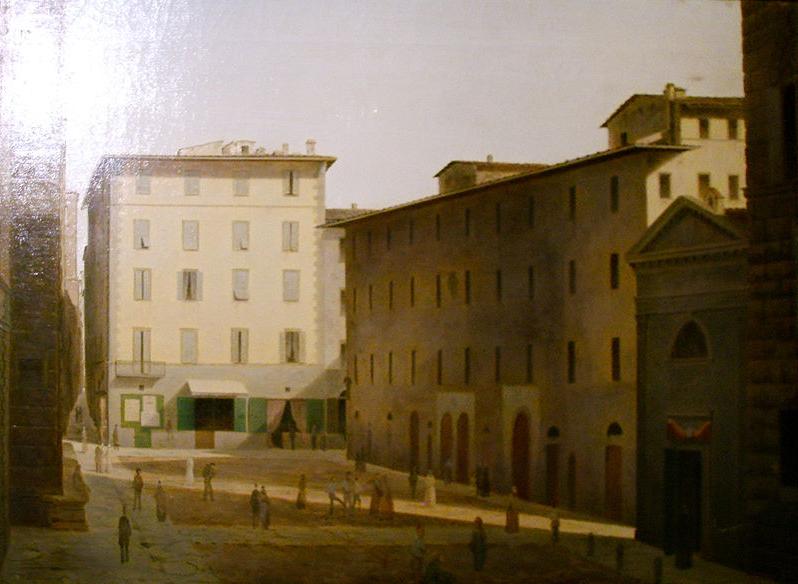
Candida Martinelli's Italophile Site

Main
Page This family-friendly site celebrates Italian culture for the enjoyment of children and
adults. Site-Overview
Here's a
report on the exhibit by SeeTen, an English-language television produced
for Florentine hotels. Clink on their link to view what is showing
right now.
He painted Florence
just before she was revamped to take her place as the new capital of
a unified (partially at that point) Italy, a project named Il Risanamento. He painted Florence with accountant-like attention to detail, and
with a native's attention to mood and emotion, sanitizing the
settings to create the romance of a city he could see was about
to change. Many of his subjects were being photographed by the
Alinari Brothers as part of their Florence
series, and by other photographers. But Borbottoni was able to
gain perspectives and
convey emotions that the stark black and white images could never
convey. His paintings are now owned by an Italian bank and were put on show at their
headquarters in 2007 (see the YouTube video in the left column
for a news report on the show). The show was free, and very popular with
Florentine natives. Places and buildings they had read of in the Old Market and
Old Ghetto areas, but which had long since been
destroyed, were brought to
life before their eyes. The area was destroyed in the 1880s to
make way for the Piazza della Repubblica. The Old Market area and the Old Ghetto evolved from the ancient
Roman Forum area of Florentie, the Roman colony on the banks of the
Arno. Much of the medieval part of Renaissance Florence was
destroyed at that time. I link, via the titles, to wonderful descriptions of the locations at Wikipedia
Italia (in Italian).
And there was an art book with prints of the
paintings and photos of the sites, but it is, sadly, no longer available.
Also out of print is Piero Bargellini's Com'era Firenze 100 anni
fa, Bonechi editore, Firenze 1998.
If you are in Florence, try to visit the
Museum Firenze com'era in via Oriuolo in the old Oblate
Convent. They have a model of the areas of the city that were
torn down, as well as a model of the Roman town Florentie. This was a privately run prison in the center of
Florence on Via Ghibellina from roughly 1300 to the early 1800s.
The only entrance was the small door Borbottoni shows on the right
side, dubbed The Door of Miseries by Florentines. The more a prisoner could pay the prison-masters, the
better his treatment inside.
Later, this church was christened The Church of Santa Maria in Campidoglio. The origins of this church are so old that no one
really knows how old it was before it was despoiled of it's art and
precious metal in 1785 by the then Grand Duke of Tuscany, Pietro
Leopoldo (the Austrians took over the title when the Medici died
out). It was in an area called the Old Market (Mercato
Vecchio) that was torn down in 1888 to make the monumental square
Piazza della Repubblica, to honor a newly unified Italy.
This church, too, was in the Old Market area of
Florence. It, too, dates back to before 1000, was
deconsecrated and despoiled by the Grand Duke Leopold, and it was
torn down to make way for the new Piazza and her surrounding
buildings. It seems that the double stairway was
typical of many churches in the Old Market area. Monumental
front steps are a luxury of wide open spaces.
The truth was, that the Old Market area consisted of many
poorly maintained, old buildings, lived in by Florence's down-and-outs,
and was full of dark, narrow, medieval alleyways. If
you compare Borbottoni's painting to the black and white photograph
taken in the 1880s, and reproduced below, you'll see that Borbottoni
gives the impression that the street is much wider than it is, and
full of light. Messy details, like store signs, are removed.
The Church of San Tommaso was situated in a corner
of the Piazzetta del mercato, the Old Market of Florence that
was the commercial center of the city from the year 1000.
It was near this square that the patriarch of the
Medici family, Giovanni de' Medici set up
his home and money-lending business, in the Jewish district
(Ghetto). While the de' Medici were not Jewish, their business
was considered a Jewish business, so that is where they had to live
and work. Visit this
page at the Wikipedia Commons for more images of the Old Market
and the surrounding areas. The last 100 years of the Old
Market area's life saw much degradation and decay. It became
the red-light district of Florence.
In this photograph taken in the 1880s, you can see the church in the
corner, directly under the Cathedral's dome. The square was
torn down to create wide roads and the impressive Piazza della
Repubblica (Piazza Vittorio Emmanuele II, at the time).
This church was in the Old Market area, too, and
torn down. Here I show Borbottoni's version, and a photograph
that was taken in the 1880s just before the church was torn down.
Borbottoni painted the Church of Sant'Andrea from another pespective.
Here we are on the church steps, looking down into the medieval
alley below the church, complete with old walkways and buttresses between the
buildings.
Piazza della Luna
is another square in the Old Market district that shows the classic
medieval architecture of the area.
The church sits in the near right of this painting
in what was then Piazza delle cipolle (Onion Square). Like
many of the churches that were in Florence at that time, this was a
church paid for by a family, this one by the Ughi, and old and
influential Florentine family.
It was later taken over by the Strozzi family as
their private chapel. People were required to pray often in
those days, and attend mass daily, so having a church on your
doorstep was a wonderful convenience for the wealthy.
The church sat opposite Palazzo Strozzi, which is better visible in the
second painting of the square. Oddly, in this painting, the
building at the end of the square is altered, and unrecognizable in
the square today.
Today, the square is called Piazza Strozzi. The church was
long ago torn down, and replaced by a palazzo, Palazzo Mattei.
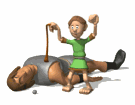
Old Florence in Photo-Quality Oil Paintings by Fabio Borbottoni
(1820-1902)
![]()
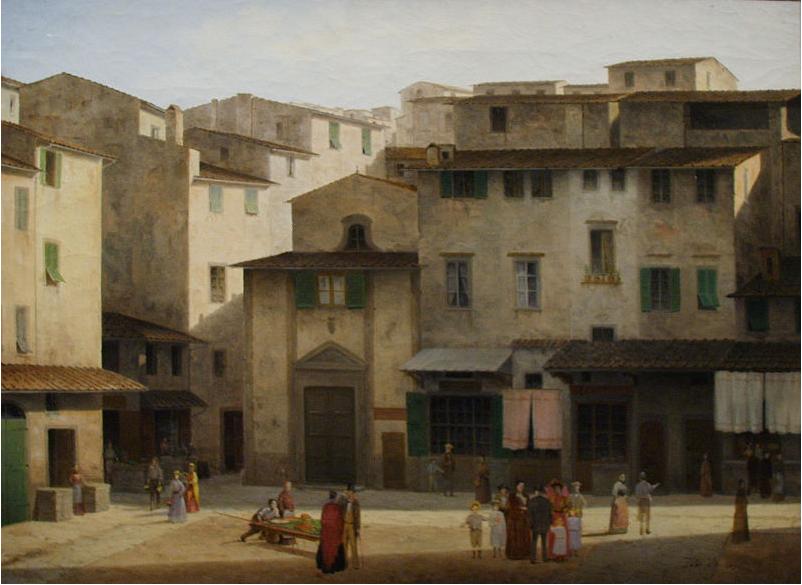

Fabio Borbottoni (1820-1902) was an artist in his spare time, but by profession,
he was an accountant for a railway company.
Il
Carcere delle Stinche
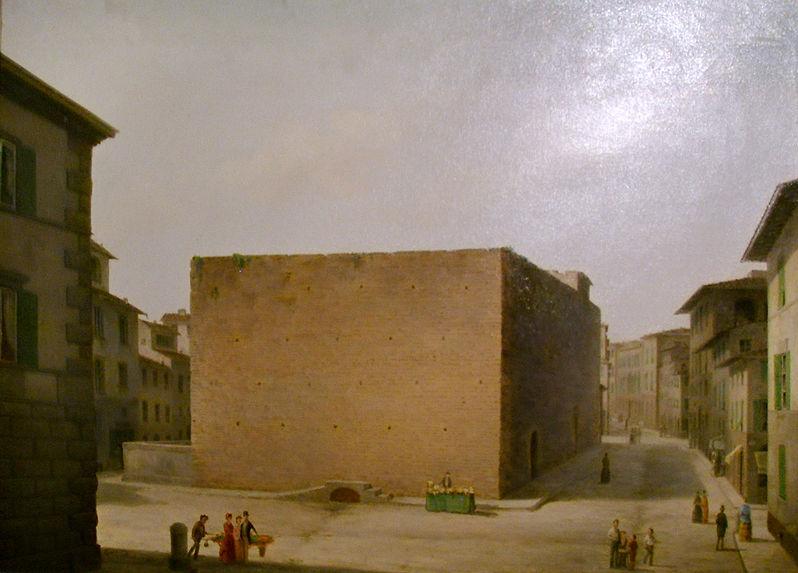
Church della Palla
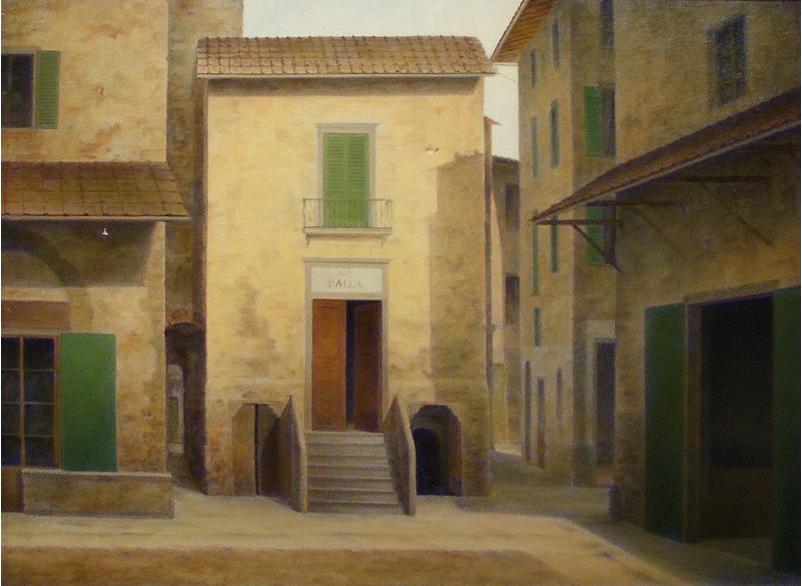
The Church of San Pier Buonconsiglio

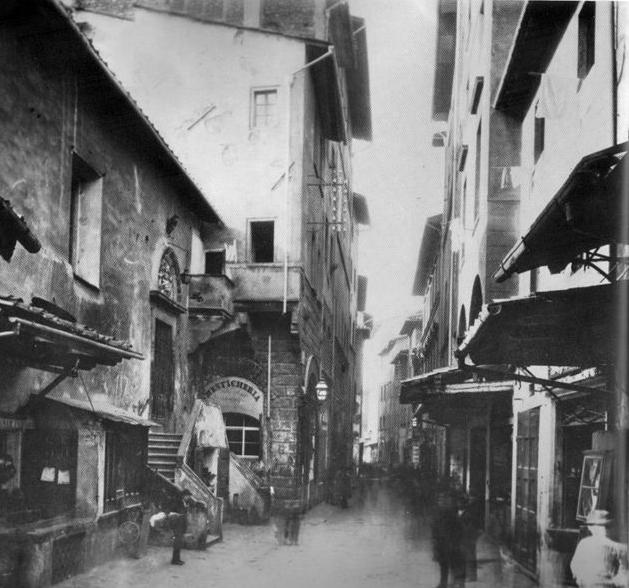
Church of San Tommaso

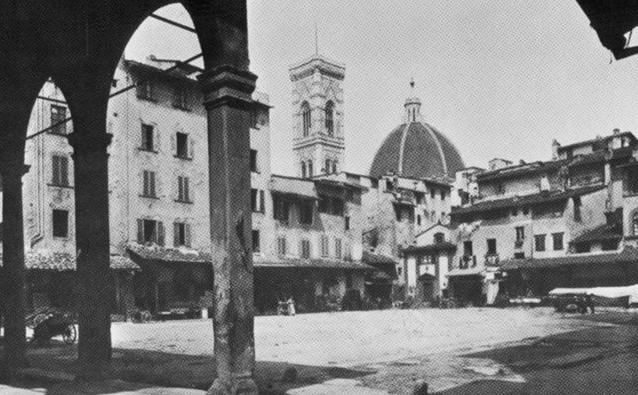
Church of Sant'Andrea
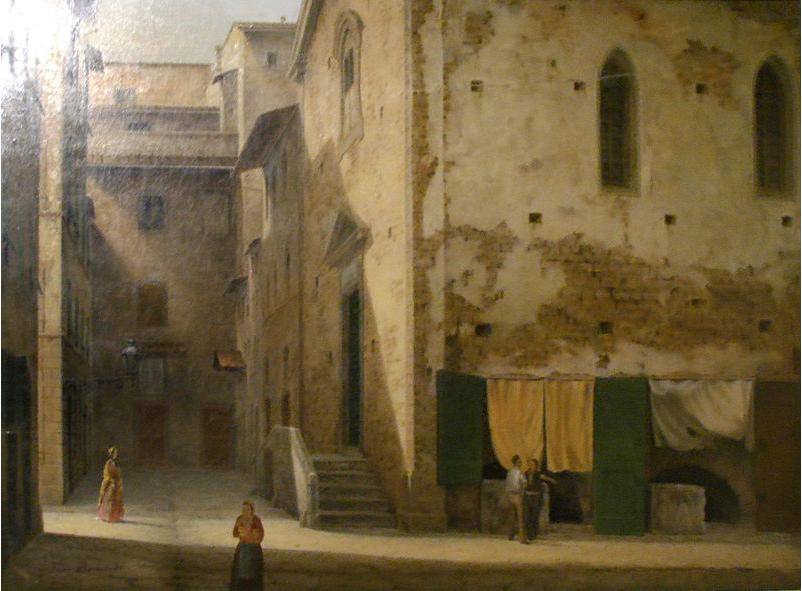
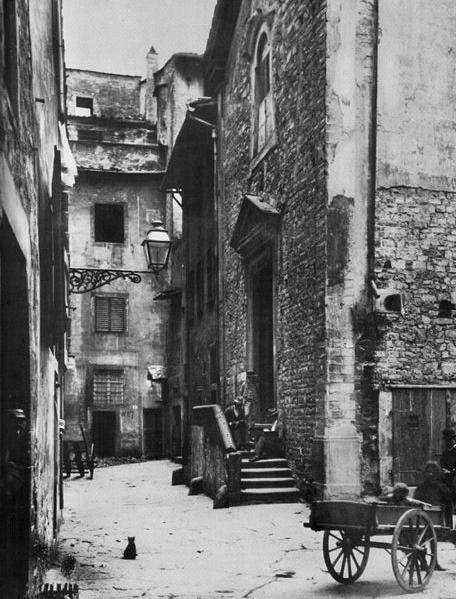
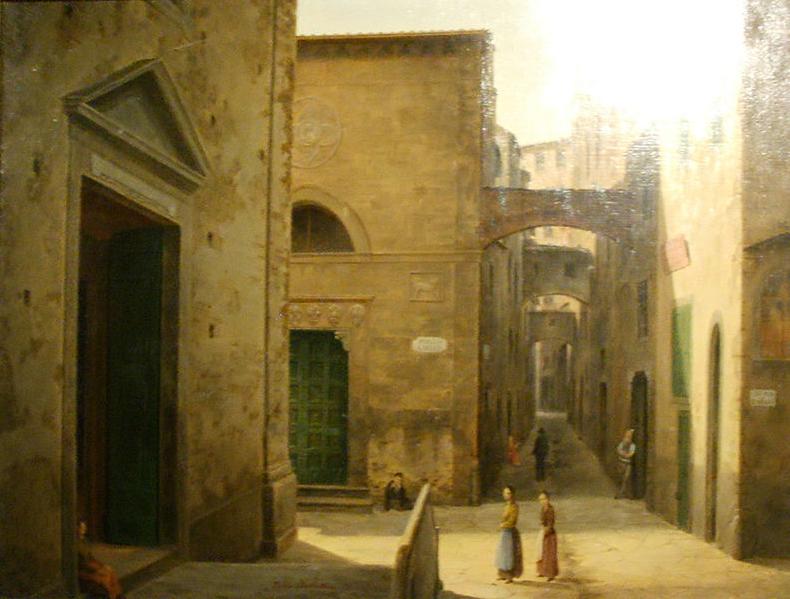
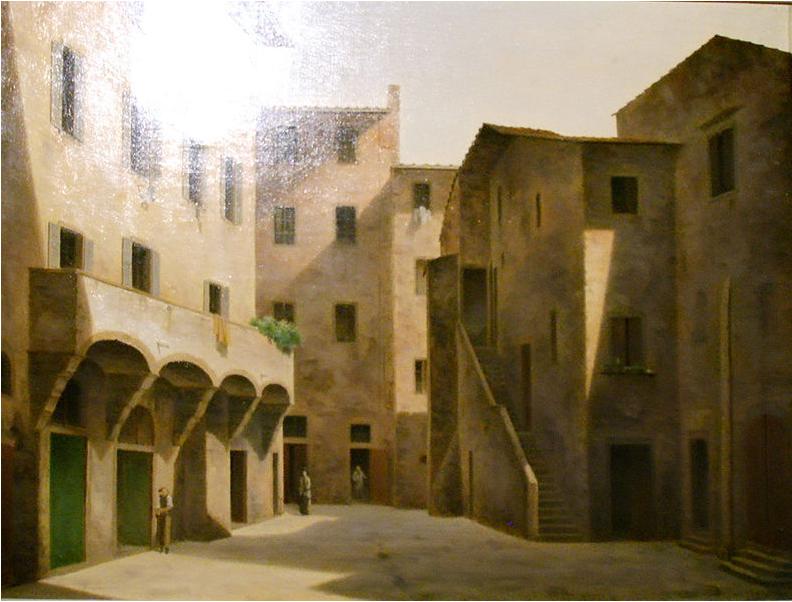
Church of Santa Maria degli Ughi
